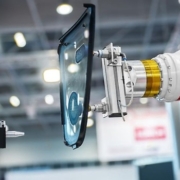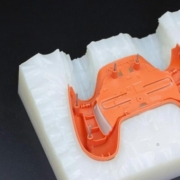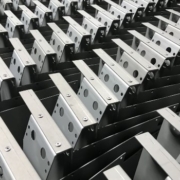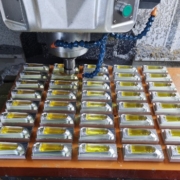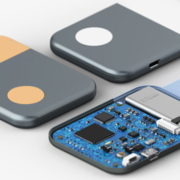Key Product Development Steps to Create the Gorgeous Prototype
It has never been simpler to create a prototype rapidly and affordably than it is now, thanks to 3D printing and online manufacturing services. Many engineers know that prototyping is not limited to early rapid prototype development but can also validate a new product at different validation stages. From engineering to sales to market research, having an updated prototype on hand may be very beneficial in obtaining the best possible project outcomes.
What is Rapid Prototyping Product Development?
Rapid prototyping is an important aspect of the product development process, and its benefits have long been established. A full-scale model created from a developed idea might reveal flaws or demonstrate the potential for prototype issues before initiating zero-scale manufacturing.
Validating and validating an idea is vital in building an intelligent, creative product. By providing early access to the product at the design stage to customers in infrastructure, manufacturing, marketing, and purchasing, customers may discover improvements, changes, and problems that it can remedy promptly and inexpensively. Rapid prototyping decreases manufacturing time by allowing for early prototype corrections.
Traditionally, prototyping has included using clay, wood, and other materials to create a mockup and manufacturing wire and duct tapes. CNC, 3D printing, SLA, SLS, and various other manufacturing processes have been included in rapid prototyping services.

To assist you in optimizing your design and minimizing costs, we’ve compiled a list of five critical prototyping stages and the production procedures that are best suited for each.
The concept for a Product
Physical mockups, or product concept models, often market an idea to internal and external stakeholders. A product idea serves as a starting point for developing a sales strategy and is particularly important during the early phases of product development.
Proof of Concept
A proof of concept prototype’s objective is to be less ornamental and more useful. Its purpose is to illustrate the product’s fundamental functioning and establish that it functions as planned. It is sometimes referred to as a benchtop model because it may be assembled using off-the-shelf components to save costs and validate the product’s functionality.
Due to the inexpensive cost of Selective Laser Sintered (SLS), 3D printed nylon is an excellent material for prototyping designs, fittings, and other features due to the inexpensive cost. When developing a proof of concept, using several manufacturing methods to accomplish functional objectives is commonplace.
Industrial Design
Industrial designs are created to confirm a product’s aesthetics, ergonomics, and scalability. The prototype replicates the final product at this stage, and the objective is to examine for optimal usability and general ease of use. When designing an electromechanical system, engineers must consider the amount of internal space necessary to package the PCBs and internal mechanics while accommodating exterior aesthetics and ergonomics.
Typically, the emphasis is on utilizing materials close to those used in the final product. For instance, PolyJet 3D printing can manufacture rubber-like components, while SLA offers a variety of materials that mimic injection molded components. Carbon DLS is especially advantageous for smaller components since we may scale it up without the need for injection mold tooling.
Prototype for Functionality
The functional prototype is when the proof of concept and industrial design collide. It is a product that can be immediately shared with a stakeholder to use and offer feedback. Functional prototypes are often created before making significant expenditures in production equipment to avoid expensive errors or revision revisions down the road. Aerodynamics, mechanical performance, mechanical characteristics, and thermal performance are all possible uses.
Durability and better surface treatments are often required for functional prototypes. As a result, many photopolymers are incompatible, and thermoplastic 3D printing, urethanes, silicone materials, and machined and metal fabricated components are employed instead.
Pre-Manufacturing Analysis
The goal of pre-manufacturing research models is to get your product in the hands of early adopters, key stakeholders, and potential evangelists before it goes into production. It should be an improved version of the operating prototype created in lesser numbers than the quantity of production planned when your product is released. Market research should provide any final comments crucial to the success of your product, while internal team members may be busy with production, assembly, and supply chain logistics preparation.
While certain 3D printing techniques, such as Carbon DLS, can scale pieces with end-use function, this step often needs prototype injection mold equipment or bridge tooling to swiftly deploy the product at a small scale in the final necessary materials. Although these tools have a shorter lifetime than the production tool, ranging from thousands to hundreds of thousands of cycles, they may provide an accurate market introduction that puts the best foot forward.
Here are some of the advantages of CNC Prototype Machining for product development:
- Environmentally Friendly Material: Another benefit of CNC machining over other processes is that the manufacturer may employ a variety of goods. Whether you want a plastic or metal sample, CNC machining can accommodate you.
- Rapid Turnaround: Unlike people, CNC machines can operate 24 hours a day, 365 days a year. The manufacturer does not repair or update this kind of equipment.
- Controlled Precision: For CNC prototyping, computer software, often in the CAD format, generates a three-dimensional model of the final piece or object’s appearance and functionality. The prototype is constructed after feeding the design into the machine’s computer. Because the system executes computer program instructions, it generates accurate models via controlled movements.
- Scalability: A CNC system can produce hundreds or thousands of similar things in addition to precise processes. Following an evaluation of the model, the engineers will make any necessary adjustments. Additionally, the operator imparts fresh information to the software program, instructing it on manufacturing the right quantity of completed items with high accuracy.
- Minimal Human Interaction: The CNC computer conducts a great deal of labor. The sole human involvement occurs during development when a competent technician ensures that it operates efficiently.
CNC Prototype Machining is a cutting-edge procedure that is always evolving. CNC is not limited to metals; we may also use it on polymers. The primary benefit of CNC prototyping is that it verifies component strength and integrity. CNC also integrates with other production processes, such as welding and bonding.

